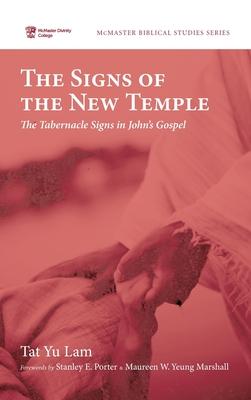Recent monographs on Johannine signs tend to focus on a single sign. Other studies that examine multiple signs mainly focus on the first half of John’s Gospel. In Christian circles, most preachers and believers remain preoccupied by the traditional view that John’s Gospel contains only seven signs. However, what constitutes a sign for John, and how signs function to achieve the purpose of the Gospel (John 20:30-31) is far from settled. Three features of this book explore important clues for solving this puzzle: (1) a fresh hypothesis that Jesus’s signs correspond to the four tabernacle signs (a pot of manna, Aaron’s staff, the bronze altar cover, and the bronze serpent), which makes sense given the tabernacle/temple theme of John’s Gospel; (2) a complete study that examines Johannine signs in the whole Gospel systematically to reveal how signs develop the book’s purpose; and (3) an adaptation of a sociolinguistic theory to examine the corresponding texts of the Old Testament and New Testament in light of how language functions in a social event. The author will show how Jesus’s signs fulfill the functions of the four tabernacle signs, and how Jesus’s crucifixion is the ""all-inclusive"" sign in witnessing to his identity.
| FindBook |
有 1 項符合
The Signs of the New Temple的圖書 |
 |
The Signs of the New Temple 作者:Lam 出版社:Pickwick Publications 出版日期:2023-11-07 語言:英文 規格:精裝 / 466頁 / 22.86 x 15.24 x 2.54 cm / 普通級/ 初版 |
| 圖書選購 |
| 型式 | 價格 | 供應商 | 所屬目錄 | $ 4235 |
福音書與使徒行傳的耶穌 |
|---|
| 圖書館借閱 |
| 國家圖書館 | 全國圖書書目資訊網 | 國立公共資訊圖書館 | 電子書服務平台 | MetaCat 跨館整合查詢 |
| 臺北市立圖書館 | 新北市立圖書館 | 基隆市公共圖書館 | 桃園市立圖書館 | 新竹縣公共圖書館 |
| 苗栗縣立圖書館 | 臺中市立圖書館 | 彰化縣公共圖書館 | 南投縣文化局 | 雲林縣公共圖書館 |
| 嘉義縣圖書館 | 臺南市立圖書館 | 高雄市立圖書館 | 屏東縣公共圖書館 | 宜蘭縣公共圖書館 |
| 花蓮縣文化局 | 臺東縣文化處 |
|
|
圖書介紹 - 資料來源:博客來 評分:
圖書名稱:The Signs of the New Temple
內容簡介
作者簡介
Tat Yu Lam is associate dean at the Institute of Christian Ministry of the Chinese YMCA of Hong Kong. She has presented several papers in biblical studies at conferences in Canada, America, and Austria. Before receiving her PhD, she spent nearly eight years in Tanzania with SIL as a scripture use specialist and translation advisor.
|











